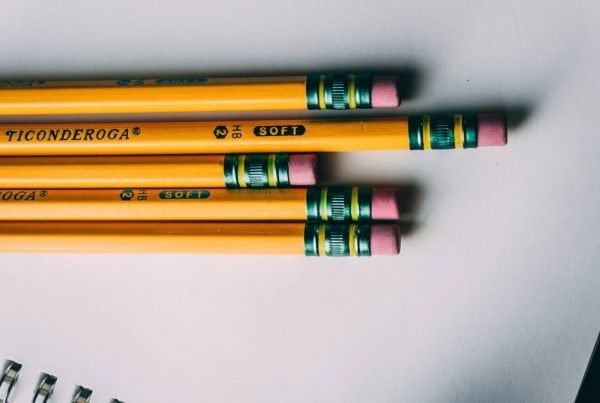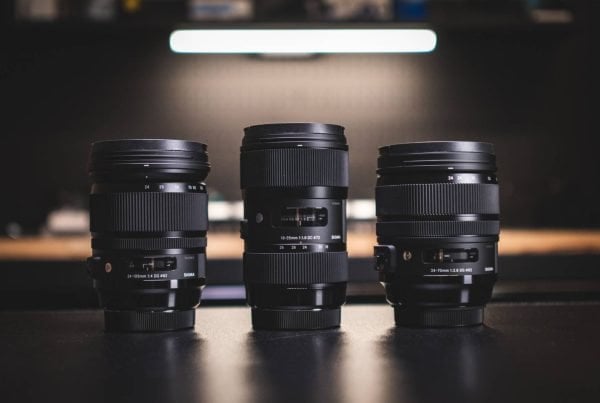When choosing lino cutting tools, the country of origin makes a significant difference in how they perform. Japanese lino cutting tools feature harder steel blades that hold their edge longer, whilst European tools typically offer more ergonomic handles and interchangeable blade systems. This distinction affects everything from carving precision to comfort during printing sessions.
Japanese manufacturers focus on blade quality and sharpness, often using traditional steel-making techniques. European makers, particularly those from Switzerland, Germany, and Britain, emphasise user comfort and versatility through innovative handle designs and modular systems.
Whether you’re creating detailed linocut work or working on larger designs, the choice between Japanese precision and European comfort can impact your printmaking experience.
Key Takeaways
- Japanese tools use harder steel that stays sharp longer but may require more skill to handle
- European tools prioritise ergonomic comfort and often feature interchangeable blade systems for versatility
- Choose based on whether you value blade longevity and precision or handle comfort and flexibility
Table of Contents
Core Differences Between Japanese and European Lino Cutting Tools

The top two rows show Pfeil tools and similar brands, while the bottom two rows display Japanese-style lino cutting tools.
Japanese and European lino cutting tools differ in their blade geometry, steel composition, and handle design. These variations affect how the tools perform during carving and which lino cutting techniques work best for different printmaking styles.
Tool Shape and Blade Design
Japanese linocut tools have steeper blade angles and thinner profiles compared to European designs. The blades cut at sharper angles, allowing for more precise control when carving fine details.
European tools usually have wider, more robust blades with different cutting geometries. These tools remove larger areas of lino material quickly and efficiently.
The Japanese V tools snap off to create clean lines when carving. This helps achieve crisp edges in relief printing.
Blade thickness varies considerably:
- Japanese carving tools: Thinner, more flexible blades
- European tools: Thicker, sturdier construction
Japanese U tools create even line widths that work well for concentric circles and controlled curves. European U gouges suit broader carving strokes.
Manufacturing Techniques and Materials
Japanese cutting tools use high-carbon steel alloys that hold sharp edges for long periods. The steel undergoes traditional forging techniques that create dense, hard-wearing blades.
European manufacturers use different steel compositions and heat treatment processes. These methods produce tools with varying hardness and edge retention.
Japanese toolmakers use laminated steel construction in some premium tools, combining hard cutting edges with softer, more flexible cores.
European tools often use uniform steel throughout the blade, creating consistent cutting performance but sometimes requiring more frequent sharpening.
Quality control standards depend on manufacturers. Traditional Japanese toolmaking emphasises hand-finishing techniques, while European mass production may not always match this level.
Handle Construction and Ergonomics
Japanese lino cutting tools typically have shorter, more compact handles designed for detailed work. The grip encourages precise finger control.
European handles tend to be longer and thicker, promoting palm-based gripping and broader carving motions.
Handle materials differ:
- Japanese: Often use specific woods with traditional lacquer finishes
- European: Use hardwoods, plastics, and composite materials
Japanese handles prioritise precision and control for detailed work.
European manufacturers focus on comfort during extended use and versatility across different carving techniques. The handles fit various grip styles and hand sizes.
Japanese Lino Cutting Tools
Japanese lino cutting tools use traditional sword-making techniques with high-carbon steel, creating sharp blades that hold their edge longer than Western alternatives. These precision instruments offer superior cutting ability and ergonomic wooden handles for comfortable carving.
Popular Japanese Brands and Tool Types
Most Japanese manufacturers produce sets that include U-gouges, V-gouges, chisels, and specialty knives. The tools usually have lightweight wooden handles that reduce hand fatigue.
Power grip carving tools allow for better control when creating detailed work on both traditional lino and softer materials.
Japanese cutting tools excel at removing residue left behind by U-shaped tools. The chisel blades clean up relief areas in your linocut print.
Japanese tool sets suit all skill levels. Beginners can start with basic sets, while professionals often invest in specialty blades for specific techniques.
Traditional Methods and Unique Features
Japanese manufacturers use layered metal construction similar to traditional sword making. This creates blades with hard cutting edges backed by softer, flexible steel.
The forging process uses centuries-old techniques passed down through generations. These methods produce tools that stay sharp longer than standard Western alternatives.
Ergonomic design sets Japanese tools apart. The handles fit naturally in your hand, reducing strain during detailed carving.
Many Japanese tools feature a minimalist aesthetic that reflects traditional craftsmanship.
Suitability for Different Lino Materials
Japanese tools work well with japanese vinyl, which provides a smooth cutting experience. The sharp blades slice through this material cleanly.
These tools also excel with traditional grey lino. The superior edge retention means fewer sharpening sessions, even with harder linoleum.
Japanese tools create clean lines that enhance your final linocut print, whether you’re working on fine details or bold designs.
The versatility extends beyond lino to woodcutting and other relief printing techniques.
Baren and Japanese cutting tools often work together in traditional printing workflows, both reflecting the Japanese commitment to precision craftsmanship.
European (Swiss, British & German) Lino Cutting Tools
European lino cutting tools have a reputation for superior craftsmanship and precision engineering. Swiss manufacturers like Pfeil lead the market with professional-grade gouges, while British and German brands offer reliable options for both beginners and experienced printmakers.
Notable Brands and Models
- Pfeil stands as the gold standard among European manufacturers. These Swiss-made tools are favoured by printmakers for their exceptional quality and longevity. Pfeil tools feature specially alloyed steel that maintains sharpness longer than most competitors. Their wooden handles provide excellent grip and reduce hand fatigue.
- Speedball offers affordable European-style options. The Speedball linoleum cutter sets provide good value for beginners whilst maintaining decent quality.
- Flexcut represents another reliable option. Flexcut carving tools feature replaceable blades and ergonomic handles.
- In the UK, Essdee produces budget-friendly alternatives. These tools are particularly suited to classroom settings and hobbyists beginning their journey with traditional lino printing techniques.
Materials, Blade Profiles, and Durability
European tools typically use high-carbon steel blades that hold edges well. This makes them ideal for cutting through dense linoleum blocks without dulling quickly.
Pfeil blades feature unique profiles for different cutting techniques. Their V-gouges create precise lines, while U-gouges remove larger areas smoothly.
European handles are crafted from seasoned hardwoods like beech or ash. These materials provide durability and a comfortable grip.
The blade geometry on European tools differs from Asian designs. European V-tools have wider angles that work better with softer European lino materials.
Quality European tools can last decades with proper care. Their robust construction justifies the higher initial cost through years of reliable performance.
Performance in Different Printmaking Contexts
Japanese and European tools perform differently across printmaking scenarios, from substrate handling to press compatibility. The choice often depends on your printing method and material preferences.
Tool Performance on Varied Lino Substrates
Japanese tools excel on traditional linoleum due to their razor-sharp blades and precise cutting angles. They slice through dense lino with minimal resistance, producing clean lines.
On softcut and speedy carve materials, Japanese tools require careful handling. Their sharpness can dig too deeply into soft substrates. European tools often work better here with their slightly duller edges and broader bevels.
Battleship grey linoleum responds well to both tool types. However, Japanese tools maintain their edge longer when cutting through this tough material. European tools may need more frequent sharpening.
For Japanese vinyl designed for printmaking, Japanese tools perform best. The substrate and tools share similar manufacturing philosophies, creating an optimal pairing for detailed work.
Easy-carve blocks suit European tools better for beginners. The forgiving nature of both the material and tool design reduces mistakes during learning.
Precision, Detailing, and Clearing Techniques
Japanese tools dominate precision work and fine detailing. Their thin blade profiles allow you to carve intricate patterns and delicate lines.
V-gouges from Japanese manufacturers cut sharper, cleaner grooves. You can create hair-thin lines and precise crosshatching with minimal effort. European V-gouges produce slightly wider cuts even in their smallest sizes.
For clearing large areas, European tools often prove more efficient. Their broader blade profiles remove material faster, though with less precision than Japanese alternatives.
Japanese chisels work well for sharp edges and geometric patterns. You can push them straight down to create precise borders that European tools rarely match.
Detail work around tight corners favours Japanese tools. Their pointed tips navigate small spaces without damaging surrounding areas, while European tools may accidentally remove wanted material.
Texture creation varies between tool types. Japanese tools produce more controlled textures, while European tools create more organic, varied surface treatments.
Hand Printing vs Press Use
For hand printing with barens, both tool types work equally well. The block quality matters more than the cutting tool choice when burnishing prints by hand.
Printing press work reveals greater differences. Japanese-cut blocks usually need less pressure because of their precise, consistent cutting depths. Lighter press settings give better ink coverage.
Etching presses work well with both tool types. Japanese-cut blocks often print more evenly because of their uniform cutting angles and depths.
On printmaking paper, Japanese-cut blocks transfer ink more consistently. The precise cuts hold and release ink predictably, which reduces printing variations between impressions.
Registration accuracy improves with Japanese tools. Their precise cuts create cleaner block edges, making alignment easier during multi-colour printing.
Ink retention varies. Japanese cuts hold water-based and oil-based inks more evenly, while European-cut blocks may show slight ink density variations in larger cleared areas.
Considerations for Choosing Lino Cutting Tools
Your skill level, maintenance preferences, and budget play crucial roles in selecting carving tools. The choice between Japanese precision and European durability depends on your specific printmaking needs and long-term goals.
User Skill Level and Comfort
Beginners benefit most from European-style tool sets with interchangeable blades. These tools offer forgiveness when learning basic techniques. The heavier handles provide stability and control as you develop muscle memory.
Intermediate artists can transition to fixed-blade tools. European brands provide consistent quality and do not require advanced sharpening skills. The robust construction handles varied cutting pressures well.
Advanced printmakers often prefer Japanese carving tools for their precision. These tools reward proper technique with exceptional detail. The lighter weight reduces hand fatigue during long carving sessions.
Hand size and grip strength affect tool comfort. Japanese handles suit smaller hands, while European designs fit larger grips. Test different handle shapes before buying a complete set.
Cutting style preferences matter. Bold, expressive work suits European tools’ robust nature. Fine detail work benefits from Japanese precision and ultra-sharp edges.
Sharpening, Maintenance, and Safety
Japanese tools require regular sharpening with specific whetstones and techniques. The high-carbon steel holds edges longer but needs proper care to prevent rust. Water stones work best for maintaining the precise angles.
European printmaking supplies often use tool-steel that’s easier to sharpen. Standard sharpening methods work with most brands. The steel forgives minor sharpening mistakes.
Maintenance schedules:
- Japanese tools: Inspect weekly, sharpen monthly
- European tools: Inspect monthly, sharpen quarterly
Safety considerations include proper cutting angles and workspace setup. Sharp tools are safer than dull ones because they require less pressure and provide better control. Always cut away from your body.
Storage requirements differ by tool type. Japanese blades need dry storage to prevent corrosion. European tools tolerate normal workshop conditions better. Use blade guards to protect edges and prevent accidents.
Cost, Longevity, and Availability
Initial investment costs:
| Tool Type | Starter Set | Professional Set |
|---|---|---|
| Japanese | £30-£150 | £200-£400 |
| European | £25-£60 | £100-£200 |
Long-term value depends on how often you use the tools. Japanese tools last decades with proper care, making them cost-effective for serious printmakers. European options offer good value for occasional use.
Replacement availability favours European brands. Local art suppliers usually stock common blade types and handles. You may need to order Japanese specialty tools online or from specialist retailers.
Professional workshops often justify higher costs. Superior cutting efficiency saves time and offsets the initial expense. Many professional printmakers use mixed tool sets, combining both styles.
Budget-conscious choices should prioritise quality over quantity. One excellent tool works better than several mediocre ones. Start with fewer high-quality pieces instead of complete cheap sets.
Frequently Asked Questions
What are the main differences between Japanese and European linocut tools in terms of material quality?
Japanese lino cutting tools use specially hardened steel alloys that stay sharp longer than standard European steel. The Japanese manufacturing process creates tools with superior edge retention and precise cutting.
European tools like Pfeil use high-carbon steel for balanced construction. They provide consistent quality but may need more frequent sharpening than Japanese tools.
Handle materials differ between regions. Japanese tools often have traditional wooden handles for specific grip techniques. European handles focus on ergonomic comfort for long carving sessions.
Can you compare the durability and longevity of Japanese lino cutting tools versus Pfeil tools?
Pfeil tools are known for their long-lasting performance due to specially alloyed steel. They resist wear during frequent use and maintain consistent cutting quality.
Japanese tools excel in blade longevity because of advanced steel hardening. The harder steel needs sharpening less often than European alternatives.
Both tool types offer excellent durability with proper care. Japanese tools may last longer between sharpenings, while Pfeil tools provide reliable performance.
Pfeil handles withstand heavy use better than some Japanese wooden handles. However, you can replace Japanese handles more easily if damaged.
What should I consider when choosing the best lino cutting tools for professional artwork?
Material quality should be your main concern for professional work. High-quality tools last longer and ensure clean, precise cuts needed for detailed artwork.
Ergonomics matter in professional settings. Comfortable grips reduce hand fatigue during long carving sessions and improve control.
Blade variety is important for different techniques. Professional sets should include V-gouges, U-gouges, and specialty blades for various line weights and textures.
Sharpening requirements affect workflow. Japanese tools usually stay sharp longer, reducing interruptions during projects.
Could you list the types of linoleum best suited for high-quality linocut prints?
Traditional grey lino backed with hessian provides excellent carving resistance and durability. Made from linseed oil mixed with wood flour, it offers professional-quality results.
Japanese vinyl gives smooth cutting for detailed work. It needs less force to carve and maintains clean edges for fine lines.
Speedy Carve offers softer carving for beginners and quick projects, but may not last through multiple print runs.
Softcut blocks are easier to carve than traditional lino and still provide good printing qualities. They suit artists moving from softer materials to professional-grade lino.
How do the functionalities of Japanese and European lino printing tools differ for detailed artwork?
Japanese V-tools create very sharp, clean lines because of their precise blade shape. Very fine Japanese V-gouges of 0.5mm are perfect for tiny details in intricate work.
European tools like Pfeil offer broader blade options for different line weights. They remove larger areas while maintaining control for medium-detail work.
Japanese U-tools cut even line widths, ideal for concentric patterns. The even line widths achieved using U-tools are perfect for carving controlled shapes.
European gouges balance precision and material removal. They work well for artists who combine detailed areas with broader carved sections.
What are the most recommended lino printing tool brands for both beginners and professional artists?
Speedball offers excellent value tools suitable for beginners to intermediate users. Speedball balances quality and affordability across their range.
Pfeil represents the premium European option favoured by professional printmakers. Their tools deliver exceptional durability and consistent performance for serious artists.
Flexcut provides versatility with replaceable blade systems, which adds to their longevity.
Japanese wood carving tools deliver superior precision for detailed work. Advanced artists use them for the finest cutting control.
Essdee and Abig offer reliable beginner-friendly options. These brands provide complete starter sets ideal for those learning basic linocut techniques.







